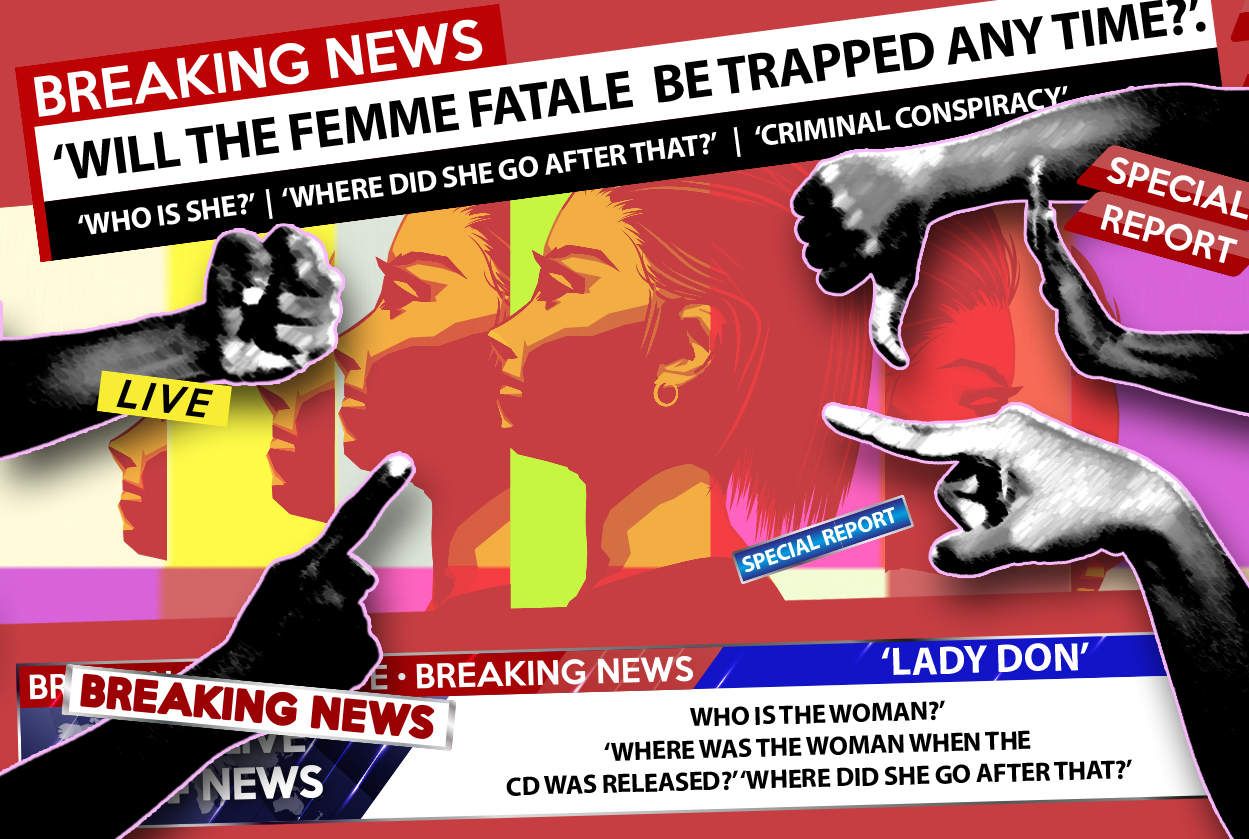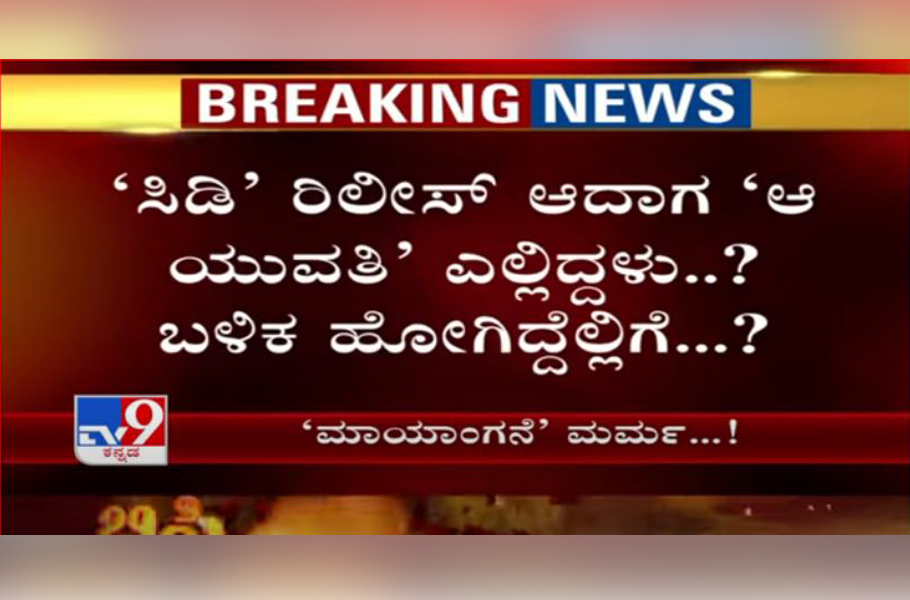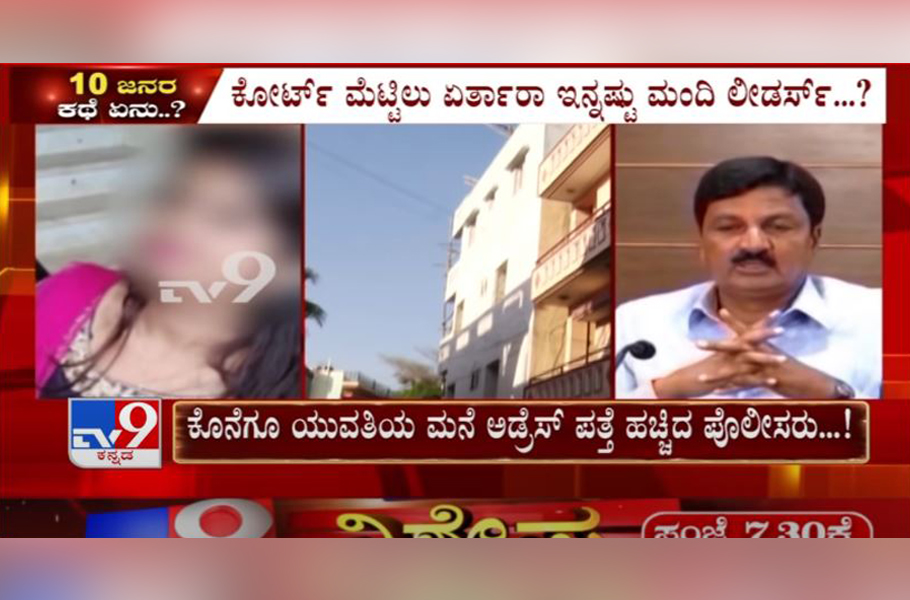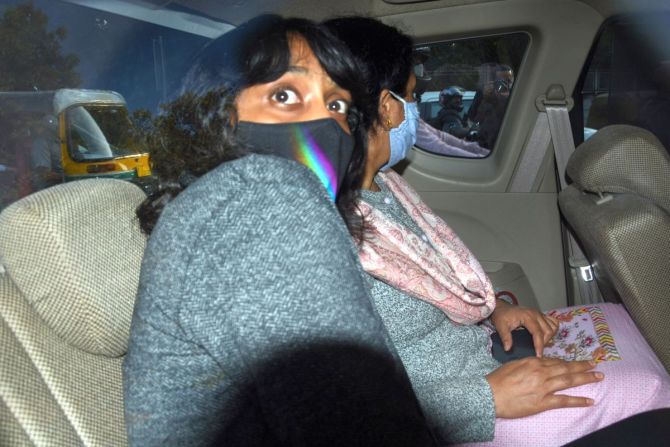
- Home
- India
- World
- Premium
- THE FEDERAL SPECIAL
- Analysis
- States
- Perspective
- Videos
- Sports
- Education
- Entertainment
- Elections
- Features
- Health
- Business
- Series
- In memoriam: Sheikh Mujibur Rahman
- Bishnoi's Men
- NEET TANGLE
- Economy Series
- Earth Day
- Kashmir’s Frozen Turbulence
- India@75
- The legend of Ramjanmabhoomi
- Liberalisation@30
- How to tame a dragon
- Celebrating biodiversity
- Farm Matters
- 50 days of solitude
- Bringing Migrants Home
- Budget 2020
- Jharkhand Votes
- The Federal Investigates
- The Federal Impact
- Vanishing Sand
- Gandhi @ 150
- Andhra Today
- Field report
- Operation Gulmarg
- Pandemic @1 Mn in India
- The Federal Year-End
- The Zero Year
- Science
- Brand studio
- Newsletter
- Elections 2024
- Events
- Home
- IndiaIndia
- World
- Analysis
- StatesStates
- PerspectivePerspective
- VideosVideos
- Sports
- Education
- Entertainment
- ElectionsElections
- Features
- Health
- BusinessBusiness
- Premium
- Loading...
Premium - Events

How Kannada news channels once again proved that misogyny rules
The coverage of the Ramesh Jarkiholi sexual harassment case, by targeting the woman victim, has exposed the misogyny within Kannada news channels.

If you are a woman living in Karnataka and mostly consuming news through local TV, the past few weeks may have been difficult for your mental health. That’s mostly true for women across India, especially every time a case of sexual abuse and rape manages to make it to prime time news. While the victims’ stories can be deeply disturbing, often reminding a woman of her own experiences in...
If you are a woman living in Karnataka and mostly consuming news through local TV, the past few weeks may have been difficult for your mental health. That’s mostly true for women across India, especially every time a case of sexual abuse and rape manages to make it to prime time news.
While the victims’ stories can be deeply disturbing, often reminding a woman of her own experiences in some other place and time, it’s the rage-inducing, 24×7 sexist tone of media coverage that makes it all the more difficult.
This is not something The Federal is saying, but a number of women it spoke to—some within the media—in the wake of the alleged sexual abuse by a Karnataka minister, Ramesh Jarkiholi.
Twenty-seven-year-old Meenakshi (name changed) admits to not reporting her harasser fearing the ‘TRP-hungry media’. This, despite the fact that Meenakshi herself works for a national media channel.
“I wanted to talk about my own experience even when the MeToo movement was at its height. But I know how the media, instead of questioning the accused, will shift its focus on my lifestyle and acquaintances instead.”
According to Meenakshi it becomes more difficult when the abuser belongs to the political-media cabal, as in her case.
What happened in Karnataka
Two days ahead of the budget session in Karnataka Assembly on March 4, a social activist filed a complaint on behalf of a woman accusing Bharatiya Janata Party MLA and minister Jarkiholi of sexually harassing her and seeking sexual favours on the pretext of giving a government job.
The complainant even alleged that there was a life threat to the woman and that is why he has filed the complaint on her behalf. As expected, within an hour, video clips of the minister and the woman flooded social media platforms.
Prima facie, it’s is a case of sexual harassment and abuse of power by a public servant. Considering the complaint came in two days before the Assembly session and it forced the minister to resign on moral grounds on March 3, the accused pushed a political conspiracy angle.
Jarkiholi, a powerful minister in the BS Yediyurappa cabinet, even filed a police complaint to that effect to claim some people were conspiring to defame him and tarnish his image.
While the police investigation was on, Kannada TV news channels predominantly focussed on who the victim was and where she belonged to, and debated whether the woman was “actually a victim or not”.
Leading anchors—Public TV’s Arun Badiger, TV9’s (Kannada) Ranganath Baradwaj, Asianet Suvarna News’s Ajit Hanumakkanavar—all questioned the activist about the whereabouts of the victim, who the victim was, who her family members were, and which district and city the woman hailed from.
TV9 Kannada flashed headlines to ask—‘Who is the woman?’ ‘Where was the woman when the CD was released?’ ‘Where did she go after that?’ ‘Will the femme fatale (Mayangane in Kannada) be trapped any time?’. All these channels also showed visuals of the house in which the woman supposedly lived, claiming the police finally found her address.
Hunger games
While the Supreme Court in 2018 barred the media from publishing names or any material which may even remotely reveal the identity of victims of sexual crimes, TV channels brazenly violated the norms. It’s an offense under section 228A of the Indian Penal Code. Even though the images of the victim were blurred in the news videos, the photos of the victim continue to be shared/tweeted/retweeted even today on social media platforms. The police have neither taken any action nor efforts to remove them.

Soon after, character assassination and vilification of the victim followed on Kannada news channels. Terms like ‘sex-tape’, ‘sex-scandal’, ‘sexual favour’, ‘sex-for-job’ were all loosely used by all media. The sleazy audio and videotape were played out repeatedly, declaring that the woman had consented for sex [for job] and hence she was asking for it.
Maitreyi Krishnan, advocate at Manthan Law says it’s incorrect to call it a scandal. The right term to refer to the case would be sexual harassment.
What the minister did, she adds, is inappropriate and unbecoming. “Moreover, it’s an offence under the Indian law. Section 354-A of the IPC brought in after the Justice Verma committee report in 2013, defines sexual harassment to include a demand or request for sexual favours. So it is sexual harassment.”
Most importantly, Meenakshi chips in, the media, our society and all those custodians of justice forget one major factor in such cases. “The matter of ‘consent’ doesn’t really arise in such cases. The fact that your job/promotion depends on whether you relent to the person’s whims itself proves manipulation, serious abuse of power and harassment by that person in the seat of power. This could be your boss or some political functionary or anyone in a position of power who promises such jobs and promotions.”
She elaborates: “What does that mean? If someone is desperate for a job she has to either give in or remain jobless. That means, she has no other choice. Where does consent come in all this?”
In the Karnataka case, four days later, the activist, who faced death threats, wrote a letter to the police seeking to withdraw the complaint expressing displeasure over the case shifting focus to defaming the woman victim, with her photos and videos going viral on social media. Kallahalli claimed he was also ostensibly pained by the accusations that he demanded extortion money.
To add to it, Jarkiholi’s brother Balachandra landed in a helicopter in the village where the victim’s parents lived to do his own private investigation, brazenly intimidating the victim and her family members. And BJP leaders, including ministers in the cabinet coming in support of Jarkiholi, posed more threat to the woman as there were fears of the case being diluted.
It looks highly improbable that the victim leaked the video. If she laid a ‘honey trap’ (as suggested by Balachandra), why would she show face in the video? She would have clearly edited/blurred it to suit her. But that was not the case. So, is it not clear that she’s the victim here?
Also, if one were to go by Balachandra’s claims, if the minister was honey-trapped then they are accepting that Jarkiholi was part of the video. But they contradicted themselves by also calling it a fake video.
The investigation
The police which moved slow on the sexual harassment complaint, however, acted fast on the counter-complaint by Jarkiholi that the video clip was fake. Following an FIR over ‘the fake video on March 13’, the victim released a video pleading to the home minister to take action and that she was being slut-shamed and people visited her home and questioned her parents, which all led to depression.
“My parents have attempted suicide twice and so have I. We don’t know who shot the video and who leaked it. We are not connected to any political party. Ramesh Jarkiholi himself had said he would give me a job. Now, they are leaking the videos and I don’t have any protection,” the woman pleaded in a video. The Federal could not independently verify the veracity of the video.
Had the TV channels showed some restraint, the woman and her family would not have been in such a difficult situation. She is clearly caught up in the media-politician nexus.

“The woman is a victim of sexual assault. As a victim, any description that points towards identifying the person is a crime,” Krishnan says. “It’s a very dangerous trend. Media going outside their house and showing footage and interviewing people around is highly invasive.”
The voyeuristic nature of media coverage in their quest for TRP only worsened by the day. The media trial and vilification continues, even more, when a woman is accused of a crime.
In the recent arrest of climate activist Disha Ravi, or in the case of Amulya Leona’s arrest during the anti-Citizenship Amendment Act protest, or during the Bangalore riots, most media outlets portrayed the women as the culprit and invaded their private lives with unsubstantiated claims.
While Public TV, a Kannada news channel, put out details of Ravi’s house, where she studied and worked, news anchor Ajith Hanumakkanavar of Suvarna News compared her to terrorist Ajmal Kasab and slain militant Burhan Wani because all three were of the same age group.
Ravi, in a statement on March 13, said: “It’s no surprise that in the days that followed (my arrest), my autonomy was violated; my photographs were splashed all over the news; my actions were pronounced guilty — not in the court of law, but on flat screens by seekers of TRPs. I sat there, unaware of the many abstractions made of me in order to satiate their idea of me.”
In the Bangalore riots case, where a woman was named as the key accused, TV9 Kannada went on to describe how she looked, called her a ‘lady don’ and body-shamed her. New18 Kannada by Network 18 group, ran a 20-minute show on April 20 to discuss the gender of the person. “She’s not a woman. She’s a transperson,” flashed across TV screens.
So much so that the media did not even spare women going to buy liquor during the lockdown. The cameras zoomed in on women customers even as they tried to shy away from the media glare. The anchors made sexist remarks, indicating that it was a crime for a woman to drink liquor.
Emails sent to Public TV, TV9 Kannda and Suvarna (Asianet) News did not elicit any response.
Senior journalist Manjula CG, who had a long stint with Kannada newspaper Prajavani, reveals the level of prejudice and hypocrisy at 24-hour Kannada news channels. She says it’s not a new phenomenon and even in Pulikeshinagar rape case (2014), the TV channels blamed the victim for going out with her boyfriend at 10 in the night.
“Though she was a rape survivor, the channels narrated in such a way that she deserved it. They revealed all the intricate details mentioned in the complaint, taking away her right to privacy,” Manjula says, adding that gender sensitivity and professionalism were completely missing in the Kannada new television channels.
“One of the reasons is women representation in Kannada media is abysmally low, maybe less than 10%,” she adds.
Gautham Machaiah, ex-executive vice president at Zee Entertainment Enterprise Ltd says though there are some fine journalists in Kannada news channels, many—even among the younger lot—come from orthodox families with a certain perception of women and how they should conduct themselves.
“This is further cemented by Kannada movies where an ideal woman is portrayed in a particular way. In the absence of formal journalism training and gender sensitisation, they hold on to these biases which get reflected in their reportage.”
He feels these channels often get away with ‘murder’ because the News Broadcasters Standards Authority (NBSA) has virtually failed in its role as a self-regulation body. “Some time ago, actress Ramya/Divya Spanda had won a Rs 50-lakh defamation suit against a Kannada channel which had linked her to the cricket betting scam. But how many women have the money or the wherewithal to pursue a long drawn and exorbitant legal case?” he asks.

Everyone is equally culpable
It’s not like insensitive reporting towards women is restricted to Kannada news channels alone. Even national news channels did the same in the case of actor Rhea Chakraborty and called her a witch and ‘gold-digger’. So was the case in Kerala when Swapna Suresh got arrested in the gold smuggling case.
FeminismIndia.org, a digital feminist media organisation, highlighted how media speculated Swapna Suresh’s role. In this article, they went on to highlight a Mathrubhumi headline—“Swapna lokathe kallakadathukaar aarokke (Who all are the prime suspects?)—adding a cringey and quite avoidable pun to Swapna’s name.
In another instance, they highlighted a Madhyamam headline that stated: “Vivaha mochanam kshesham Thiruvananthapuram; nakshatra party kaloode unnatha bandham sookshichu (Returned to Thiruvananthapuram after divorce; maintained high contacts through big parties).”
Preethi Nagaraj, an independent journalist in Mysuru, says Kannada media realised pretty late that they can “bring the bar down”. “It started with Tamil and Malayalam TV channels before Kannada news channels joined the rat race.”
“The way we have understood feminism is to think that only women need to speak up when there is distasteful coverage about women, is not right,” Nagaraj adds. “These channels have reduced feminist fights to shrill debates. It also exposes the undeniable gap between male and female voices in the media.”
Nagaraj, who has observed Kannada media for long, says such narratives come from tabloid-style journalism and late journalist Ravi Belagere’s Crime Diary reportage two decades ago. She says while Lankesh Patrike (by P Lankesh, father of Gauri Lankesh) inspired a set of journalists and set a mature narrative, Ravi Belegere who emerged after him was in a rush to capture everything and put his own seal on everything.
“The more crass one gets, the more viewership it attracts. More eyeballs, more advertisements follow,” Nagaraj says.
Machaiah agrees that some of these journalists have graduated to electronic media from tabloids which thrive on the vilification of women and character assassination. “A story with a vamp always sells. Hence, the mantra is, if there is no vamp or villain, create one,” he says.
Nagaraj points to trends in the newsrooms where women representation is far less and upper-caste men lead the top management roles. “It’s not like men and the upper caste do not have the power and sensitivity to stop such coverage. Of course, they do. When they can crack a whip on a reporter for not covering certain political news, they can certainly decide on ways to cover news related to women.”
Media regulation. Sorry, what?
The media broadcasting guidelines, Programme and Advertising Codes, prescribed under the Cable Television Network Rules, have laid down strict guidelines while reporting gender issues and sexual harassment cases.
In fact, the Bombay High Court in the Sushanth Singh Rajput case detailed that the norms of journalistic conduct framed by the Press Council of India for the print media ought to be extended to cover the electronic media till such time appropriate guidelines are framed for the electronic media by the appropriate authority.
“The level to which patriarchy is internalised is so evident. Caste has dimensions. But patriarchy doesn’t. Patriarchy is a beneficiary in every caste/religion. It’s more universal than we think,” Nagaraj says.
She adds that it could also be a result of the current political scenario in the country, solidified by the method of ownership.
“Women are looked at as sub-humans, the same way the ruling dispensation looks at minority communities,” she adds.
Media regulation is a grey area in India. Every media house seeks to ensure it remains independent and at the same time functional and is accountable for what it reports.
Manjula opines that the situation would change only when there’s presence of more women voices in really large numbers.
“Even if there are two-three women in the newsroom, they may succumb to the management pressure or toe the male-centric line because of job insecurity,” she says.
So, unless there are more women voices, things will remain the same, Manjula adds. “The same sexist narrative every time.”
